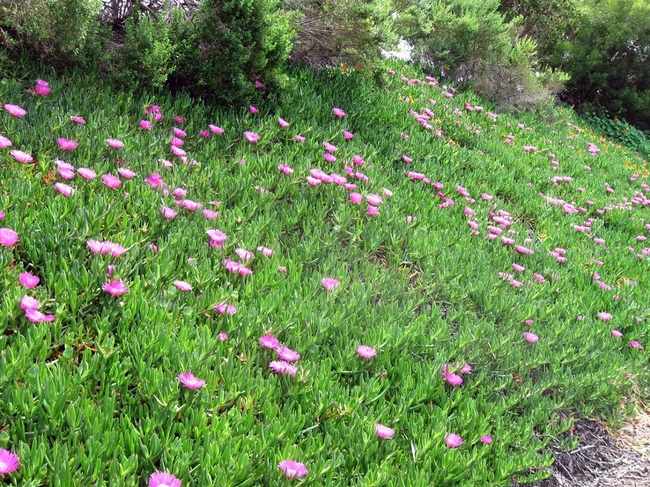You've probably seen this invasive plant growing along highways or the coast in California. Highway iceplant, Carpobrotus edulis, was intentionally introduced to prevent soil erosion along highways and coasts but it has since invaded many different ecosystems and outcompetes native plant species. The California Invasive Plant Council (Cal-IPC) rated this plant as an A-1 species, meaning it is one of the “most invasive and damaging species that are widespread in the state.”

What does highway iceplant look like?
The highway iceplant, also known as the hottentot fig, is a succulent with fleshy three-sided stems. It grows as dense ground-covering mats and produces large yellow to light pink flowers in the late spring and early summer.
What can you do about highway iceplant?
For decades iceplant was widely promoted as an ornamental landscape plant. While its popularity has dwindled, it may still be available for sale in some nurseries. Avoid buying and planting iceplant. Instead, choose plants native to California and visit the PlantRight website to find similar-looking alternative plants. If you have iceplant on your property, it can easily be removed by hand pulling. Be sure to get all live shoots as it can regrow from any node left behind.
For more information, visit the UC IPM Pest Notes: Invasive Plants or the Cal-IPC Plant Report on the highway iceplant.